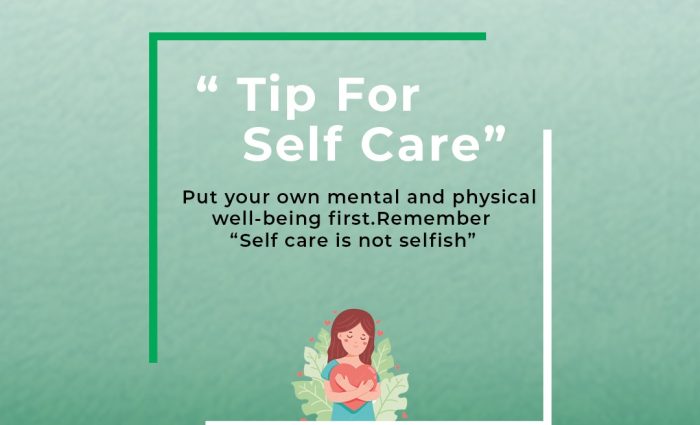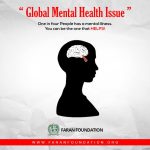Mental health is a critical aspect of our overall well-being, yet many people still don’t understand the complexities of mental health disorders and their symptoms. The good news is that with awareness, education, and support, individuals can take proactive steps toward managing their mental health. In this blog, we’ll explore some of the most common mental health disorders, their symptoms, and how seeking help can make a significant difference in one’s life.
1. Anxiety Disorders
Anxiety disorders are among the most common mental health issues. These conditions can cause intense fear or worry, often without a clear trigger. While it’s natural to feel anxious from time to time, an anxiety disorder can interfere with daily activities and prevent individuals from leading a fulfilling life.
Symptoms of Anxiety Disorders:
- Persistent worry or fear that is disproportionate to the situation.
- Restlessness or feeling “on edge.”
- Difficulty concentrating or your mind going blank.
- Physical symptoms like sweating, trembling, rapid heartbeat, or dizziness.
- Avoiding situations that may cause anxiety.
Common types of anxiety disorders include Generalized Anxiety Disorder (GAD), Social Anxiety Disorder, and Panic Disorder. Treatment options such as Cognitive Behavioral Therapy (CBT), mindfulness practices, and medication can help manage symptoms effectively.
2. Depression
Depression is more than just feeling sad or low; it’s a pervasive condition that affects every aspect of life. It can impact one’s mood, behavior, relationships, and even physical health. Depression is highly treatable, but many people don’t seek help until the symptoms have taken a significant toll.
Symptoms of Depression:
- Persistent feelings of sadness, hopelessness, or emptiness.
- Loss of interest in activities once enjoyed (anhedonia).
- Fatigue or lack of energy.
- Difficulty sleeping or oversleeping.
- Changes in appetite or weight (either loss or gain).
- Thoughts of death or suicide.
There are different types of depression, including Major Depressive Disorder (MDD) and Bipolar Disorder (which includes episodes of both depression and mania). Treatment for depression usually involves a combination of therapy and medication, which can significantly improve quality of life.
3. Bipolar Disorder
Bipolar disorder is characterized by extreme mood swings, from manic highs to depressive lows. These shifts can affect a person’s ability to function normally, and the duration and intensity of episodes can vary from person to person.
Symptoms of Bipolar Disorder:
- Manic Episodes: Elevated or irritable mood, excessive energy, impulsive behaviors, racing thoughts, reduced need for sleep, and risky activities.
- Depressive Episodes: Feelings of sadness, hopelessness, fatigue, trouble concentrating, and lack of interest in activities.
Bipolar disorder requires long-term management, typically through a combination of mood-stabilizing medications and therapy. With the right treatment, many people with bipolar disorder can lead fulfilling lives.
4. Obsessive-Compulsive Disorder (OCD)
OCD is a disorder characterized by recurring, unwanted thoughts (obsessions) and repetitive behaviors (compulsions). Individuals with OCD often perform these behaviors to reduce anxiety or prevent a feared event, but the actions often offer only temporary relief.
Symptoms of OCD:
- Obsessions: Intrusive thoughts, fears, or images that are difficult to control (e.g., fear of contamination, fear of harm coming to loved ones).
- Compulsions: Repetitive behaviors performed in response to obsessions (e.g., washing hands excessively, checking locks or appliances, counting, or arranging objects in a particular way).
While OCD can be debilitating, Exposure and Response Prevention (ERP) therapy and medications like SSRIs can significantly reduce symptoms and help individuals regain control.
5. Post-Traumatic Stress Disorder (PTSD)
PTSD can develop after a person experiences or witnesses a traumatic event. While it’s normal to feel stress or anxiety after a traumatic event, PTSD occurs when those feelings persist and begin to affect daily life.
Symptoms of PTSD:
- Re-experiencing Symptoms: Flashbacks, nightmares, or intrusive memories of the traumatic event.
- Avoidance: Steering clear of reminders of the trauma, including certain places, people, or activities.
- Hyperarousal: Being easily startled, feeling tense or on edge, difficulty sleeping, or having trouble concentrating.
- Negative Changes in Mood and Thinking: Feelings of guilt, shame, or hopelessness, and a sense of detachment from others.
PTSD is treatable with therapies such as Cognitive Behavioral Therapy (CBT) and Eye Movement Desensitization and Reprocessing (EMDR), alongside medication to help manage symptoms.
6. Eating Disorders
Eating disorders, such as Anorexia Nervosa, Bulimia Nervosa, and Binge Eating Disorder, are characterized by severe disturbances in eating behavior and preoccupation with body image. These disorders often stem from a combination of genetic, environmental, and psychological factors.
Symptoms of Eating Disorders:
- Extreme concern with weight or body shape.
- Restricting food intake or binge eating.
- Engaging in unhealthy behaviors to prevent weight gain, such as purging or excessive exercise.
- Physical symptoms like dizziness, fatigue, and gastrointestinal issues.
Treatment for eating disorders often includes therapy (particularly Cognitive Behavioral Therapy), nutritional counseling, and sometimes medication. Addressing both the physical and psychological aspects is essential for recovery.
7. Borderline Personality Disorder (BPD)
Borderline Personality Disorder is a mental health condition marked by instability in relationships, self-image, and emotions. People with BPD may experience rapid changes in their mood and have difficulty regulating their emotions, leading to impulsive behaviors.
Symptoms of BPD:
- Intense episodes of anger, depression, or anxiety that last a few hours to a few days.
- Difficulty in relationships, often swinging from extreme idealization to devaluation.
- Impulsive behaviors such as reckless driving, substance abuse, or self-harm.
- Chronic feelings of emptiness or fear of abandonment.
Dialectical Behavioral Therapy (DBT) is the most widely used treatment for BPD and helps individuals regulate their emotions and behaviors.
8. Attention-Deficit/Hyperactivity Disorder (ADHD)
ADHD is often diagnosed in childhood, but it can continue into adulthood. It is characterized by symptoms of inattention, hyperactivity, and impulsivity that can make daily tasks challenging.
Symptoms of ADHD:
- Difficulty focusing or staying on task.
- Impulsive decision-making or behaviors.
- Hyperactivity or constant movement.
- Disorganization or forgetfulness.
Treatment for ADHD typically includes behavioral therapy and medications such as stimulants that help improve focus and impulse control.
Conclusion: Seeking Help
While the symptoms of these common mental health disorders can be overwhelming, it’s important to remember that mental health is treatable. If you or someone you know is experiencing any of these symptoms, reaching out for help is a crucial first step.
Therapies, medications, and lifestyle changes can all play significant roles in managing symptoms and improving quality of life.



